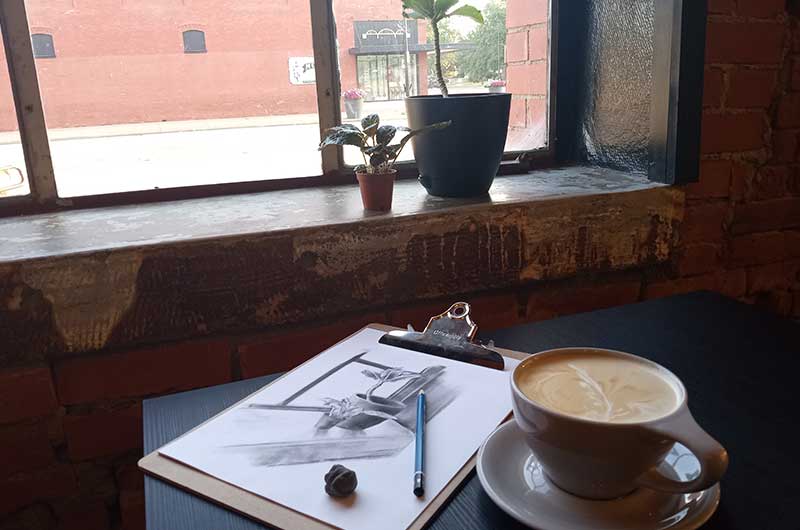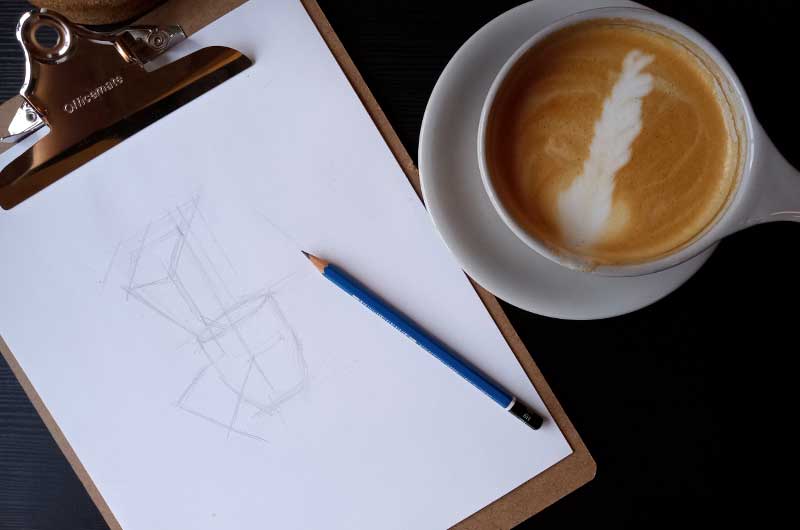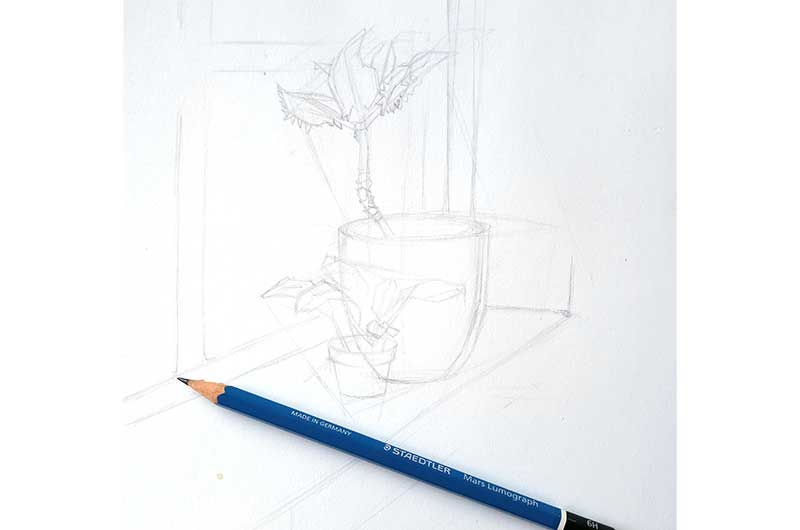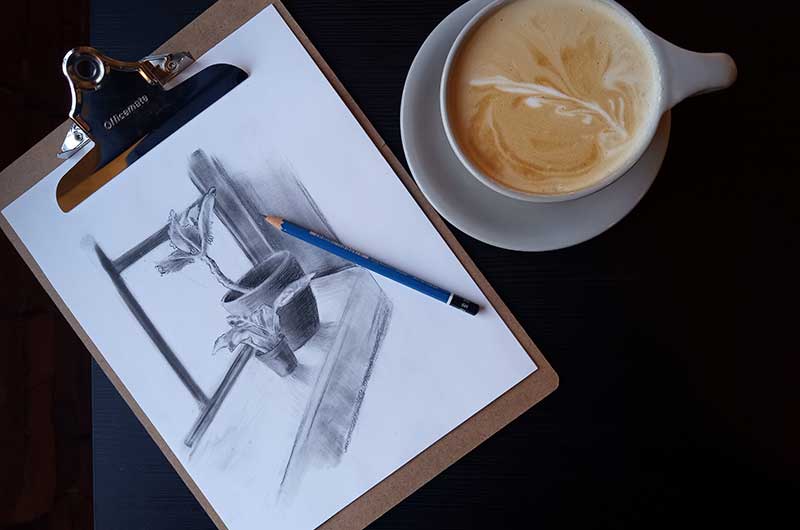getRealism
Want to create realism in art? You've come to the right place.

Make Still Life Drawing Easier With 7 Simple Tips
- Choose The Right Location For Still Life Drawing
- Selecting Objects To Draw
- Plan The Composition
- Selecting A Location For Drawing
- Lighting Objects For Drawing
- Art Materials
- Photographing Inanimate Objects For Drawing
Drawing A Still Life
What Is Life Still Drawing?
A still-life refers to the subject matter of a drawing. It's a drawing of objects that are inanimate, usually material things. Examples are drawings of fruit, plants, and metal or glass containers.
Still-life drawing can fall into a wide range from simple to complex, representational to expressive. Life still drawing is also called "nature morte" or "natura morta". Gather a few items, nicely arrange them, and draw.
Occasionally, an interesting composition appears by happenstance. Like a stroke of good luck, a collection of items demands attention. New to still-life drawing? Here are a few practical tips I've learned over time.
Choosing The Right Location For Life Still Drawing
Plan the location for your still life drawing, considering the time it will take and the level of detail. Keep everything the same for the duration of the drawing process. Taking over your dining room table for an afternoon still-life sketch is one thing. A realistic still-life drawing may take days, weeks, or months, depending on the level of detail. While some won't mind sacrificing the family dining space for art, others may not appreciate it.
Find a convenient spot for your still-life setup to avoid constant rearrangement.
I enjoy sketching at the coffee shop, seeking inspiration from a consistent subject like a potted plant. This allows for daily visits to leisurely draw while sipping on coffee. Drawing a still life with pencils is convenient when on the go. Color pencil still life drawing would also be a good choice for this type of environment.

Beginning to sketch a still life of plants.

Continuing to sketch still life of plants.

Finished sketch still life of plants.
Selecting Inanimate Objects For Drawing
For beginners, start with simple objects and experiment with lighting to add visual interest. Bold lights and shadows can make even the most common stuff seem interesting.
Are you looking for a still-life idea? Here are a few ideas for still life drawing:
- Eggs
- Engines or Machine Parts
- Still Life Drawing Flowers
- Dishes & Pottery
- Baked Goods
- Still Life Drawing Fruit & Vegetables
- Plants & Gardening Supplies
- Toys
- Candy & Packaged Goods
- Still Life Drawing Wine Bottle
- Shoes
- Still Life Drawing Skull
Household stuff can make a great still life. Simple things may be easier to draw. Combining textures adds interest. Reflections on glossy surfaces can be fun and challenging. Add interest by casting shadows onto a colorful background. The perfect still-life drawing for beginners may be a simple grouping of 2 to 3.
Planning The Composition For Drawing A Still Life
Select a grouping of objects. Raise or lower items by placing them on books or other objects. Create an interesting composition from a variety of heights.
Placing objects upon draped fabric or a glossy surface can create interest.
Get the still-life composition right. Get the lighting right. Get the placement right. Get the background right. Getting it all right from the start makes drawing easier.
Finding The Perfect Location For Drawing
If working from an easel, consider leaving your easel, lamps, and light sources in place for the duration of the drawing.
Again, you'll seldom get them back into the same position. The slightest change in placement changes the view and requires changing the drawing.
Lighting Inanimate Objects For Drawing
Natural light can be great for sketching. If drawing inside the studio, Northern light is often recommended. Consider setting a still-life up next to a Northern-facing window. Remember that natural light changes faster than you might think.
Consider using artificial light for longer sessions and realistic drawing. Lamps and lights create consistent lighting over long periods. A lamp or light source can be placed at a 45-degree angle on one side of the object. Placing the light source to one side creates contrasting lights and shadows. Even in a fully lit room, a brighter light source can be directed to one side creating contrast.
Visually separate dark objects from a dark background by placing a small lamp or light source behind and slightly below to illuminate the background.
Lighting objects directly from the front can visually flatten shapes. Areas of light and shadow make it easier to create an illusion of depth and 3D forms.
Art Materials For Drawing
Use art materials designed to help reach the desired result. Charcoal works great for still-life drawings. Art pencils are available in a wide variety of styles and hardness.
Photographing Inanimate Objects For Drawing
Drawing from photographs is a great way to preserve a still life long enough to create a drawing. Fresh flowers can be photographed for still-life drawings. Fleeting moments happening in nature are often a stroke of luck easily captured by photography, perfect for drawing later.
What Should Be Drawn First In A Still Life Drawing?
The arrangement should be thought of as a single object. Imagine the pieces are all glued together, forming one single piece. Draw a rough container representing the overall shape of the group together as a whole. Compare this container from top to bottom, then side to side. Make sure that the width and height are proportional.
Begin drawing when satisfied that the container is the appropriate size, height, and width. Focus on the areas of light and dark. Consider the negative spaces between as important as the objects themselves.
What Is Most Important In Still-Life Drawing?
Lighting may be one of the most essential things in still-life drawing. Intriguing lighting can make the most ordinary stuff seem extraordinary. Extra care should be given to lighting objects in a still-life before drawing.
How Many Objects Should Be In A Still-Life Drawing
A still-life drawing can include as few or as many objects as you like.
Conclusion:
Plan ahead for life still drawing by curating objects that interest you. Select a space that can be used as long as it takes to complete the drawing. Group objects together at a variety of heights, creating interesting compositions.
Use natural light for sketching if you like. Consider artificial lighting for long periods.
Create areas of light and shadow by placing a light on one side of the group of objects. Don't move the still life, easel, or light sources until the drawing is finished. Consider drawing perishable fruit and flowers from photographs for convenience if time is of the essence.